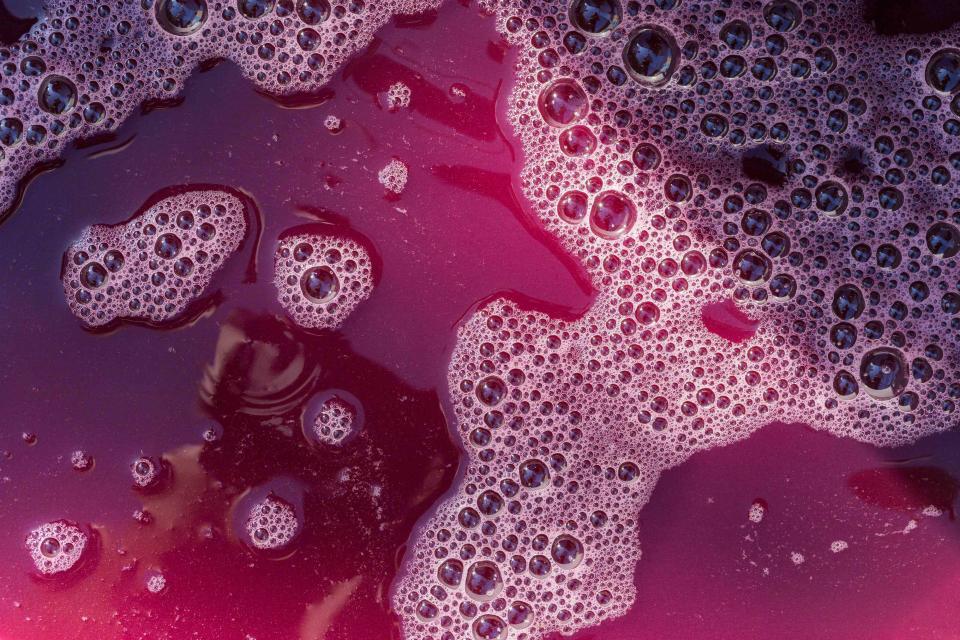Is Alcohol-Free Wine Better for You, but Worse for the Environment?
The process of making dealcoholized wine is getting more efficient, but there's a long road ahead for producers.

Piotr Velixar / Shutterstock
From the rise of Dry January to the success of non-alcoholic cocktail books, like Food & Wine 2021 Gamechanger Julia Bainbridge’s Good Drinks, the zero-proof movement is a force to be reckoned with. Stores like Spirited Away and Boisson have opened dedicated to the category, and legacy brands like Freixenet, J. Lohr, and Wölffer Estate are getting in on the action. An October 2022 Nielsen report shows that non-alcoholic beverage sales rose by 23.2% over the previous year, while market research group Fact.MR projects that the non-alcoholic wine market in particular is expected to continue a compound annual growth rate of 10% over the coming decade.
Whenever any category or product grows at such a break-neck speed, it’s worth asking: What’s the impact? Is there a downside?
To answer those questions, it’s important to first understand how non-alcoholic wine is made. A handful of these wines, like Acid League’s popular Proxies, are blends of fruit juice, herbs, spices, and verjus or shrubs. The majority, though, start as wine and then undergo a dealcoholization process. The resulting bottles can still contain up to 0.5% alcohol by volume (compared to around 11-14% for standard wine), hence the non-alcoholic versus alcohol-removed distinction.
How is wine dealcoholized?
Alcohol gets into wine one way: Yeast eats the sugar in grapes and produces ethanol. To remove that ethanol is less straightforward. In a reverse osmosis process, wine is pressurized against a membrane to separate water and ethanol from concentrated wine. The water is distilled and added back to dilute the wine to a palatable state. While effective at preserving flavor and texture, this method is water-intensive, making it less environmentally friendly.
Then, there’s the spinning cone method, in which a centrifuge first spins all of the volatile flavor and aroma compounds out of the wine, preserving them. On a second pass, all of the alcohol is spun from the wine. Those flavors and aromas can be added back. A chemical option adds an enzyme to eat grapes’ sugar before they undergo winemaking, so there’s nothing to convert into alcohol.
For Maggie Frerejean-Taittinger, cofounder of French Bloom — a brand that makes Champagne-inspired dealcoholized wine — there was only one option.
“It was important to preserve the flavors and rebuild that beautiful flavor architecture of the wine,” she says.
Frerejean-Taittinger was able to accomplish that through vacuum distillation, a popular option that calls for the fewest steps. In this process, the alcohol is essentially cooked out of the wine in a vacuum-sealed tank at relatively cool temperatures, somewhere between 75 and 90°F. It does compromise some of the aromatics, but many producers will simply add those back in at the end of the production process This is also when they’ll carbonate the wine, if they’re making a sparkling wine like French Bloom does.
Related:We Tried 16 Non-Alcoholic Sparkling Wine Alternatives to Find the Best — Here's What We Chose
“The number one insight you need to have is that dealcoholization is an energy intensive process,” says Mehmet Gürbüzer, head of sales for Oddbird, a Sweden-based company that makes non-alcoholic still and sparkling wines. “A few things are energy intensive in the entire process…The number one impact is the cultivation of the wine [grapes].”
To help offset the dealcoholization process’s carbon footprint, Gürbüzer says that Oddbird wines are farmed using organic and minimal intervention techniques. Holly Berrigan, founder of natural wine retailer Mysa, estimates that each bottle of conventionally farmed wine is responsible for about 1.2 kilograms of carbon emissions; for wine farmed without machinery, that number drops to 0.8 kilograms. Of course, that’s only one facet of what makes a wine “natural” or “minimal intervention,” but it’s a pretty significant drop.
In most cases, wine is transported from the winery to a separate facility for dealcoholization, further adding to the process’s footprint. French Bloom has strategized so that its dealcoholization facility is essentially on the way from the winery in Languedoc, in Southwest France, to the bottling facility just north of Cognac, a total distance of around 200 kilometers.
Both Gürbüzer and Carl Héline, French Bloom’s chief operating officer and head of research and development, stress that bottles and shipping are significant sources of carbon footprint for dealcoholized wines, just as they are for traditional, alcoholic wines. As a result, Oddbird is looking into more lightweight options, such as cans, a step brands brands like Sovi, Leitz Wein, Surely and Fre have already taken. Meanwhile, French Bloom forgoes the gift boxes that many Champagnes are packaged in with carbon footprint in mind.
Even with positive steps already being taken, Héline is quick to point out that the process will only get better, noting that the technology around the dealcoholization process is changing rapidly to improve both the quality of the wines, and increase energy efficiency.
For more Food & Wine news, make sure to sign up for our newsletter!
Read the original article on Food & Wine.

